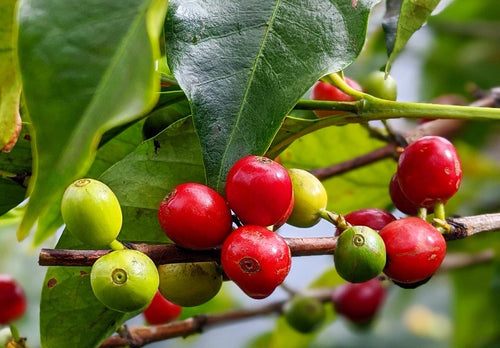16 Jan 2023
What is coffee cupping?
Coffee cupping is a technique that coffee tasters use to assess the quality and flavor of a coffee batch. It is a standardized method that entails carefully smelling and tasting brewed coffee to determine its qualities and identify any defects. We can evaluate its properties based on the taste, aroma, and visual stimuli obtained during the tasting. It is also referred to as the sensory evaluation of coffee.
These evaluations enable us to determine the impact of various factors and processing conditions on the quality characteristics of the coffee and, as a result, understand the coffee under consideration. Aromas and flavors in fresh and high-quality coffee can be distinguished, allowing for significant differences depending on origin.

What do coffee tasters look for during the cupping?
The following characteristics are specifically sought during the tasting:
Fragrance: An aromatic aspect known as the smell of a dry coffee bean.
Aroma: The smell of coffee when it is infused in hot water. Aroma is an essential component of the cupping and tasting experience because it adds a more complex feel. For example, you might detect fruity, citrusy notes or smoky notes in the aroma.
Acidity: This refers to the flavor note and the number of acidic elements in the coffee bean. It should not be confused with the sour or bitter taste of coffee because acidity is a characteristic of coffee that provides qualities that produce a flavored drink that is not as flat.
Taste: Defined as the combined impression of all taste buds' sensations and retro-nasal aromas that travel from mouth to nose. To score the flavor, we must consider the coffee's intensity, quality, and complexity during cupping. As a result, the flavor will be sweet, sour, salty, umami, bitter, or a combination of some of these.
Body: It is the sensation of the coffee's intensity in the cup. It could be light, thin, or full-body coffee. A full-bodied coffee will have a creamy or even syrupy flavor, for example.
Aftertaste: It refers to the sensation that the coffee flavor lingers on the palate after drinking it. The score is low if the aftertaste is very brief or unpleasant.
Balance: This refers to the complementation of the flavor, aftertaste, acidity, and body of the coffee.

Each property is rated for its intensity on a scale of 1 to 10, with 1 being negative and 6 and up being positive. The higher the score, the better the cup's quality.
There is a standard procedure for coffee cupping.
It is recommended to take three random samples from the same lot to determine if it has low or high-quality coffee beans. The selected samples must be roasted 24 hours before tasting and rested for at least 8 hours.
The grind must be 70% to 65% and must pass through a #20 sieve. The next step is to prepare your cups, which should be made of ceramic or tempered glass.
It is essential to note that the proper proportion is 8.25 grams of coffee per 150 ml of water, with a temperature of 93°C.
The tasting is repeated three times: with hot coffee, warm coffee, and cold coffee. On a larger scale, this allows you to distinguish coffee's true flavors and aromas.
After adding hot water to the coffee, it must brew for a set amount of time, usually between three and five minutes. After brewing, the coffee is cooled for a few minutes before the taster breaks the crust that forms on the surface of the coffee with a spoon. This allows the taster to inhale the aroma of the coffee and evaluate its fragrance.

The taster then scoops a small amount of coffee with the spoon and slurps it into their mouth, spraying it all over their palate. This allows the taster to assess the coffee's flavor, body, acidity, and aftertaste. The taster may spit the coffee out after tasting it to avoid palate fatigue.
Coffee cupping is typically performed in a group setting, with multiple tasters evaluating the same coffee to reach an agreement on its quality and flavor.

At JA Coffee, we cup every single lot of coffee we purchase and receive. It is an activity that helps us decide what coffee to bring in, ensure that what we are selling meets the requirements set to our customers, and allows us to taste different parts of the world from our office.
Have you already been to a cupping session? If so, what was the best part about it? If not, do you want to have one? Contact us to join us in one of our weekly cupping sessions.

